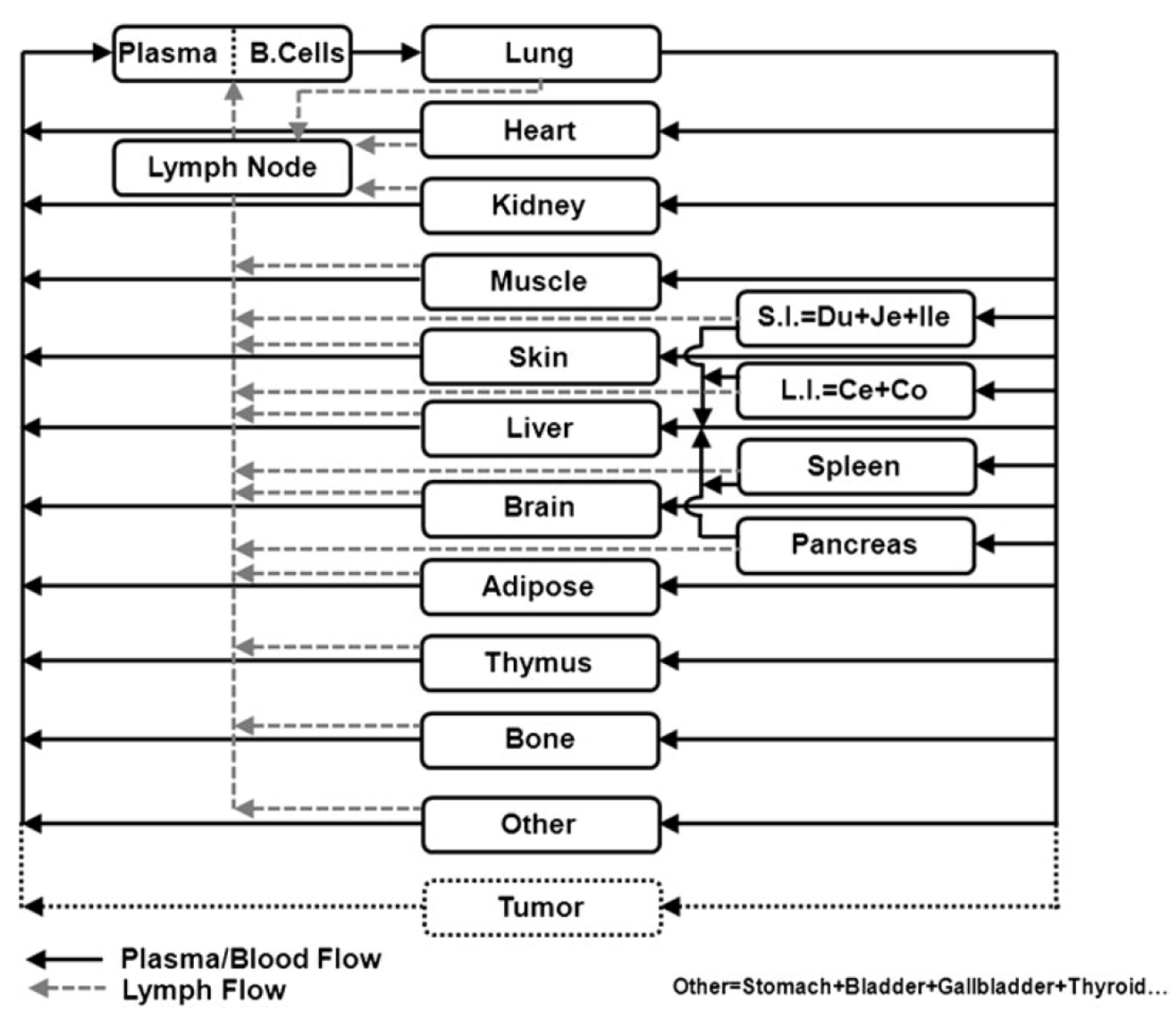Physiologically Based Pharmacokinetic Models
What is PBPK?
Physiologically Based Pharmacokinetic (PBPK) models are an extension of empirical compartmental PK models. Built on a similar mathematical framework as PK models, PBPK models also incorporate known anatomy and physiology in the form of biochemistry and fluid dynamics. They are multicompartment models in which each compartment corresponds to a tissue or organ. The absorption, distribution, metabolism and excretion of a drug are described mechanistically when possible. Data on tissue structure, volume and composition, as well as, biophysical or physicochemical properties of the drug are used in PBPK modeling. PBPK models are platform models for different modalities (e.g. small molecule, mAbs). They can range in complexity and incorporate only a few compartments (a minimal PBPK model ) or many compartments (for a more complex model). PBPK models can also be expanded to a PBPK-PD model to include the expression of the target of interest in different tissues, particularly at the site of action.
PBPK models could provide more accurate prediction than allometric scaling and take both intrinsic (physiological/subject-related) and extrinsic (other parameters impacting drug disposition) factors into account when making predictions.

When to use PBPK Modeling
Due to the mechanistic nature of PBPK models, they are useful for providing a priori predictions of drug disposition, before PK data is available. PBPK models can also be leveraged to provide predictions of drug concentrations in tissues where direct measurement can be challenging or infeasible.
Example questions addressed by PBPK models:
- Prediction of human PK when the compound is at preclinical stage
- Prediction of food effect on PK prediction of drug-drug interactions (DDI)
- Prediction of clinical PK for different drug formulations (e.g. extended vs immediate release)
- Prediction of exposure in patient populations with impaired organ function (e.g. impaired liver function, impaired kidney function/ESRD)
- Prediction of exposure in pediatric or elderly populations
- Prediction of exposure in obese or diabetic patients
PBPK Model Examples
Challenge: How can we translate adult PK into a pediatric population? Can we reduce the need for clinical studies using PBPK modeling?
Solution: Once we have a thorough understanding of PK in adults, we can scale the adult PBPK model using anthropomorphic information and other age-related factors such as physiological differences and age-dependent clearance.
Challenge: Can we use PBPK modeling to predict the exposure of our new oral drug formulation without needing a dedicated clinical trial?
Solution: Using PBPK modeling, we can focus on the gut compartment to account for differences in dissolution profiles to predict absorption and exposures differences.
Free Consultation
What scientific questions are you trying to answer? We'll put you in touch with the right person on our team.